Springtime flowers are eagerly anticipated after a long, dreary winter, especially if you're gardening at altitude. Hardy from the high plains of the Rocky Mountains' Front Range and up to elevations of 8,000 feet — and more — the tough plants below are reliable bloomers in windy, cold and dry regions, even in years when winter snow has been scarce.
Bees and other pollinating insects are also on the hunt for dependable food sources come spring — yet another reason to incorporate some of these lovely perennials into your water-wise garden. Once established they need only occasional supplemental watering; a good soaking every few weeks during the heat of summer should do the trick.
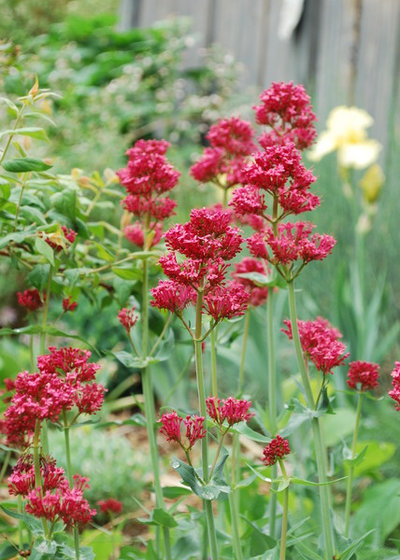
Jocelyn H. Chilvers
Jupiter's Beard (Centranthus ruber)Cheery, deep-pink flowers add a lot of energy to the spring garden — and beyond. Jupiter's beard also features blue-green leaves in an open, upright form that looks great with coarse or grass-like foliage. The white flowering species,
Centranthus alba, looks especially nice in the filtered light of deciduous trees. Jupiter's beard attracts butterflies and makes an excellent cut flower. Deadhead it regularly to prevent self-sowing and for repeat blooms from spring through fall. Provide average, well-drained soil.
USDA zones: 4 to 9 (find your zone)
Water requirement: Low
Light requirement: Full sun to filtered shade
Mature size: 2 to 3 feet tall and 1 1/2 to 2 feet wide
Seasonal interest: Spring through fall (with regular deadheading)
When to plant: Spring or fall
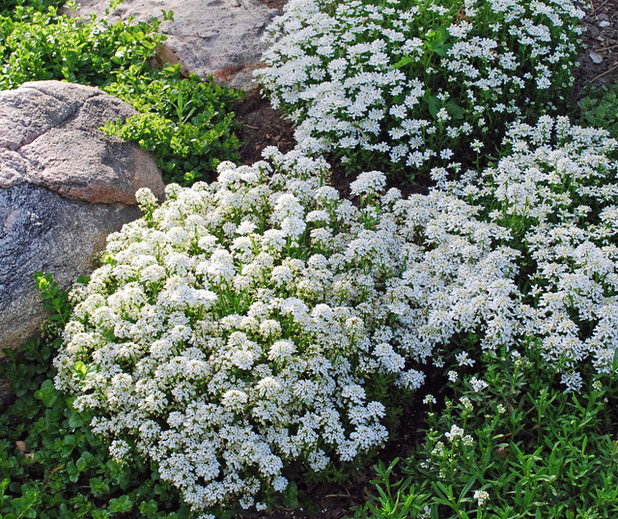
Jocelyn H. Chilvers
Candytuft (Iberis sempervirens) Candytuft provides a mass of sparkling white flowers for up to six weeks on a low, mounding form of glossy evergreen foliage. It is an asset as a foreground plant edging a planting bed or tumbling between boulders in the rock garden. Candytuft is a subshrub with a woody base — shear plants back by half after flowering to keep them neat and encourage compact growth. Provide average to lean, well-drained soil.
USDA zones: 4 to 9
Water requirement: Moderate to low
Light requirement: Full to partial sun
Mature size: 10 to 12 inches tall and 18 inches wide
Seasonal interest: Spring
When to plant: Spring or fall
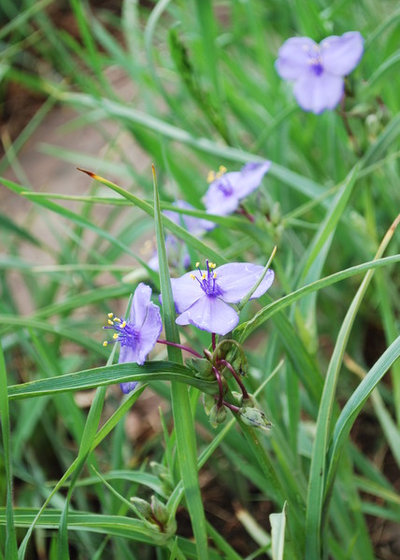
Jocelyn H. Chilvers
Western Spiderwort (Tradescantia occidentalis)Native to most of central North America, western spiderwort has blossoms that echo the color of the springtime sky. Although more drought tolerant than the common garden hybrids, western spiderwort features the same grass-like foliage and unique three-petaled flowers. Include it in your native perennial garden, meadow or mixed border. Flowers attract butterflies from late spring through early summer, and it's deer resistant. Plant in average to sandy soil.
USDA zones: 5 to 8
Water requirement: Low
Light requirement: Full sun to filtered shade
Mature size: 1 foot to 1 1/2 feet tall and wide
Seasonal interest: Late spring through early summer
When to plant: Spring or fall
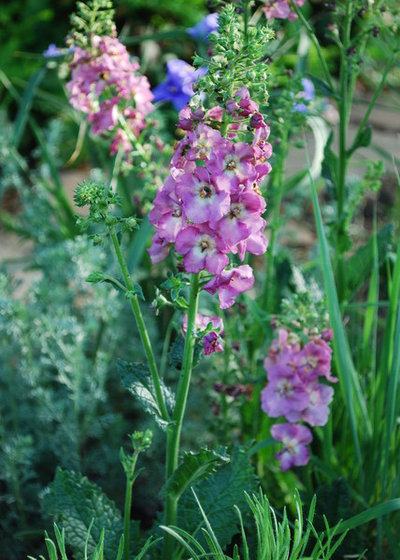
Jocelyn H. Chilvers
Purple Mullein (Verbascum phoeniceum) This lovely and unusual plant sports 2- to 3-feet-tall spikes packed with flowers of purple, violet, pink or white. A short-lived perennial or biennial, it will self-sow (without being weedy) if the flowers are allowed to ripen and set seed. Purple mullein is a graceful addition to the wildflower garden, meadow or mixed border. Provide well-drained, lean — even sandy — soil.
USDA zones: 5 to 8
Water requirement: Moderate to low
Light requirement: Filtered sunlight or afternoon shade
Mature size: 2 to 3 feet tall and 1 foot to 1 1/4 feet wide
Seasonal interest: Spring
When to plant: Spring or fall
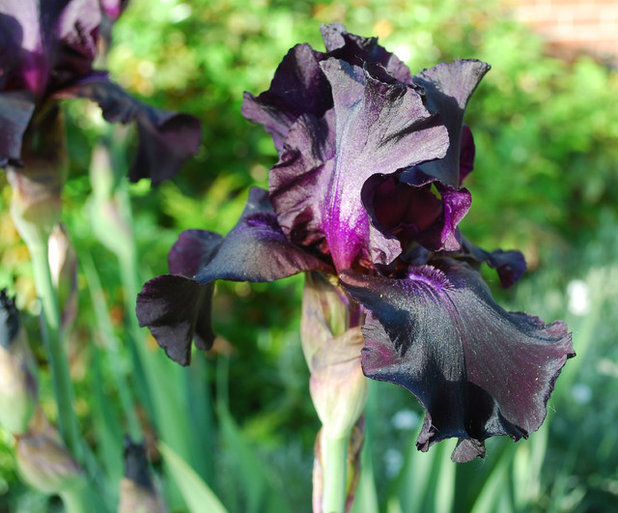
Jocelyn H. Chilvers
Bearded Iris (Iris germanica)Bold and beautiful, bearded iris features upright, strap-like foliage and large, distinctive flowers in a myriad of colors. A longtime favorite of Western gardeners, bearded iris is nearly goofproof — and deer resistant. Divide the rhizomes in midsummer when they become overcrowded, every three years or so, to ensure a strong flower show each spring.
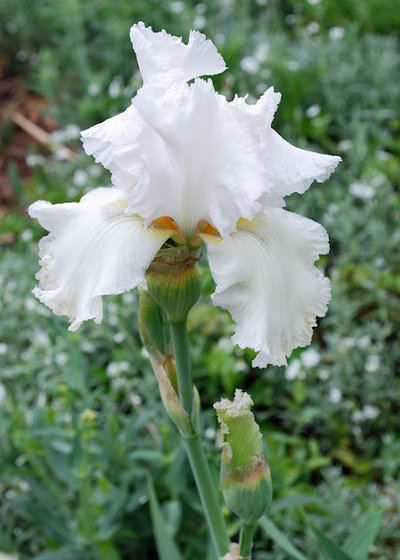
Jocelyn H. Chilvers
White bearded iris and snow-in-summer (
Cerastium tomentosum, shown here) make an elegant white-on-white combination. Plant rhizomes in a shallow trench in lean, well-drained soil.
USDA zones: 3 to 11
Water requirement: Low
Light requirement: Full sun
Mature size: 2 to 3 feet tall and 1 1/2 feet wide
Seasonal interest: Spring
When to plant: Potted plants may be planted spring or fall; rhizomes should be planted in late summer.
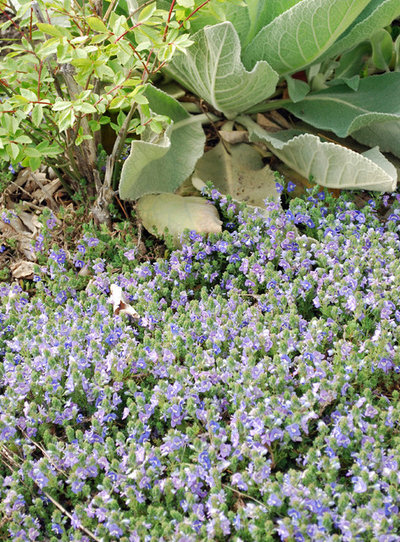
Jocelyn H. Chilvers
Woolly Veronica (Veronica pectinata) Named for its small, furry, silvery leaves, woolly veronica is flat, semievergreen and drought tolerant.
Little blue flowers with white eyes cover the plant in midspring. It's an ideal ground cover in hot, sunny areas, such as parking strips, spaces along sidewalk edges or moderate slopes for year-round erosion control. Use it as a companion plant for spring-flowering bulbs like crocuses and species tulips. Woolly veronica is both deer and rabbit resistant. Plant it in any well-drained soil.
USDA zones: 4 to 9
Water requirement: Very low
Light requirement: Full sun to partial shade
Mature size: 2 inches tall and 18 inches wide
Seasonal interest: Springtime flowers; foliage year-round
When to plant: Spring or fall





